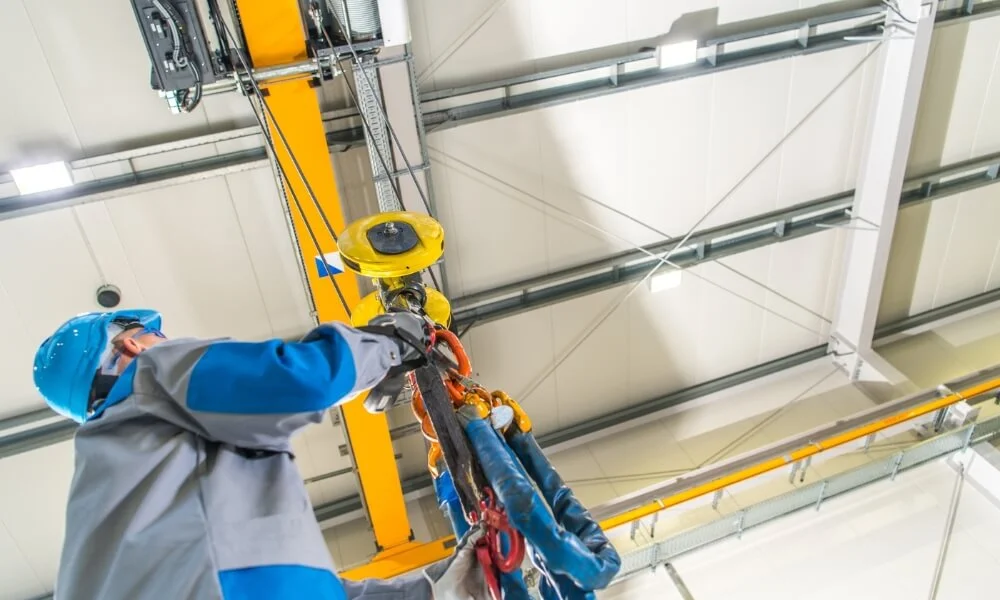Lifting equipment safety is paramount in various industries, including construction, manufacturing, and logistics. Ensuring the safe operation of lifting equipment, such as cranes, hoists, and forklifts, is crucial to prevent workplace accidents, injuries, and fatalities. Proper lifting equipment handling and maintenance protect workers and bystanders and help minimize downtime, reduce operational costs, and maintain overall productivity.
Accidents related to lifting equipment can have devastating consequences, ranging from minor injuries to loss of life, property damage, and costly legal implications for the organization. These accidents can occur due to equipment failure, operator error, inadequate maintenance, or a combination of factors. By following essential safety rules and creating a safety culture, workplaces can significantly reduce the risk of such accidents and ensure a safer environment for all involved. This article will outline ten essential rules for lifting equipment safety to prevent accidents.
Essential Lifting Equipment Safety Rules
Lifting equipment is used in many industries for various purposes, such as construction, manufacturing, and logistics. While these tools and machines are incredibly useful, they can also be dangerous if not used properly. Here are ten rules for preventing accidents when working with lifting equipment:
1. Inspect The Equipment Before Use
The first rule for accident prevention when using lifting equipment is to thoroughly inspect the equipment before each use. This is crucial because even a minor issue can lead to accidents, equipment failure, or damage to the materials being lifted. Here are some more details on how to properly inspect lifting equipment:
- Visual inspection: Begin by conducting a visual inspection of the equipment. Look for any visible signs of wear and tear, such as frayed cables, bent hooks, or damaged chains. Also, ensure that all equipment parts are free from rust, corrosion, or any other damage that could compromise its structural integrity.
- Functional inspection: After visually inspecting the equipment, test its functions to ensure proper operation. For example, check that the hoist moves smoothly in all directions, the brakes securely hold the load, and the limit switches function as intended.
- Documentation: Maintain a record of all inspections, including the date, the person who conducted the inspection, and any issues found and addressed. This documentation will help track the equipment’s maintenance history and identify recurring issues needing further attention.
- Follow manufacturer guidelines: Always refer to the manufacturer’s guidelines for inspecting and maintaining lifting equipment. These guidelines will provide detailed instructions on what to check and how often inspections should be conducted.
Following these steps when inspecting lifting equipment can significantly reduce the risk of accidents and ensure the safety of all workers involved in lifting operations.
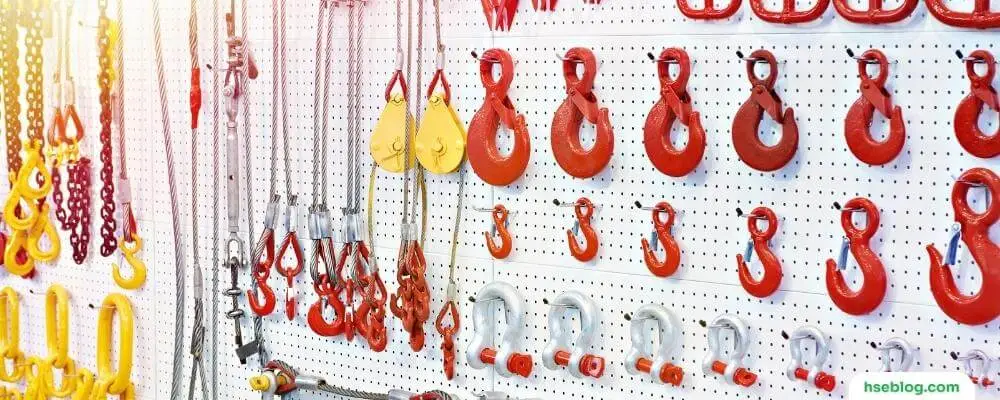
2. Don’t Exceed The Equipment’s Capacity
Overloading lifting equipment can lead to equipment failure and serious accidents. It is essential to always adhere to the equipment’s maximum capacity and ensure it is suitable for the load being lifted. Here are some tips to follow:
- Know the equipment’s capacity: Familiarize yourself with the lifting equipment’s maximum capacity, usually indicated on the equipment or in the manufacturer’s guidelines. This capacity is the maximum weight the equipment is designed to lift safely.
- Determine the weight of the load: Before attempting to lift any load, accurately determine its weight. This can be done using scales or referring to shipping documents or product specifications. Consider the weight of any additional rigging or attachments used in the lifting operation.
- Choose the right equipment: Based on the weight and shape of the load, select the appropriate lifting equipment. Ensure the equipment is suitable for the specific load regarding capacity, dimensions, and compatibility with the rigging system.
- Distribute the load evenly: Ensure the load is well-balanced and properly secured before lifting. Uneven distribution of the load can cause stress on the equipment and may result in failure or accidents.
- Monitor the load during lifting: Keep an eye on the load during the entire lifting operation. If any signs of instability, stress, or equipment failure are observed, stop the operation immediately and address the issue before proceeding.
By following these guidelines and never exceeding the equipment’s capacity, you can ensure the safety of all workers involved in lifting operations and prevent accidents caused by overloading.
3. Train Employees Properly
Proper training is essential for ensuring the safe use of lifting equipment. Providing thorough and up-to-date employee training will help prevent accidents and create a safer working environment. Here are some key aspects to consider when training employees to use lifting equipment:
- Comprehensive training: Provide training that covers the equipment’s capabilities, limitations, and potential hazards. This should include how to safely operate, inspect, and maintain the equipment and identify and respond to potential issues.
- Hands-on experience: Include practical, hands-on training where employees can practice using the equipment under supervision. This will help build confidence and ensure they are comfortable operating the equipment in real-world situations.
- Training updates: Keep employees’ training updated by offering refresher courses and training sessions when new equipment is introduced. This will ensure they know the latest safety precautions and best practices.
- Certification and qualifications: Ensure that employees receive the appropriate certifications or qualifications for the lifting equipment they use. This may include crane operator certifications, forklift licenses, or other industry-specific qualifications.
- Encourage continuous learning: Promote a continuous learning and improvement culture by encouraging employees to attend industry workshops, seminars, or conferences. This will help them stay informed about the latest safety guidelines and best practices.
By providing comprehensive, ongoing training for employees who use lifting equipment, you can reduce the risk of accidents, improve efficiency, and create a safer working environment for everyone.

4. Regular Inspection And Maintenance
Regular inspection and maintenance are essential to ensure that lifting equipment functions correctly, performs efficiently, and is safe to use. To ensure proper functioning, lifting equipment should undergo inspection and maintenance by qualified personnel who follow the manufacturer’s guidelines.
The inspection and maintenance frequency should be based on the manufacturer’s recommendations, equipment usage frequency, and other factors. A competent person should thoroughly examine the lifting equipment and its accessories before using it for the first time. The competent person should then conduct periodic checks per regulations or according to an examination scheme during regular use, repairs, or planned maintenance.
A safety inspection checklist can help verify critical features where deterioration would cause a risk. The checklist should cover essential components such as wire ropes, chains, hooks, brakes, and limit switches. The checklist can also help identify any residual risks specified by the manufacturer in the instructions provided with the equipment.
5. Proper Use Of Attachments
Using the appropriate attachments specified by the manufacturer is crucial for safe lifting equipment operations. The manufacturer provides specific attachments for a particular equipment model, and it is essential to use only those attachments. Using incompatible attachments can lead to equipment failure, resulting in accidents and injuries.
Each attachment has specific load ratings and other requirements that must be considered before use. For instance, using a hook with a lower load rating than the equipment can handle can result in the hook bending or breaking, leading to a load falling and causing accidents or injuries. Similarly, using incompatible or inappropriate slings or chains can result in the load slipping or falling, causing accidents.
Ensuring the attachment is correctly installed and secured is also essential. The attachment should be correctly aligned with the lifting equipment and securely fastened using appropriate bolts, pins, or other means specified by the manufacturer.
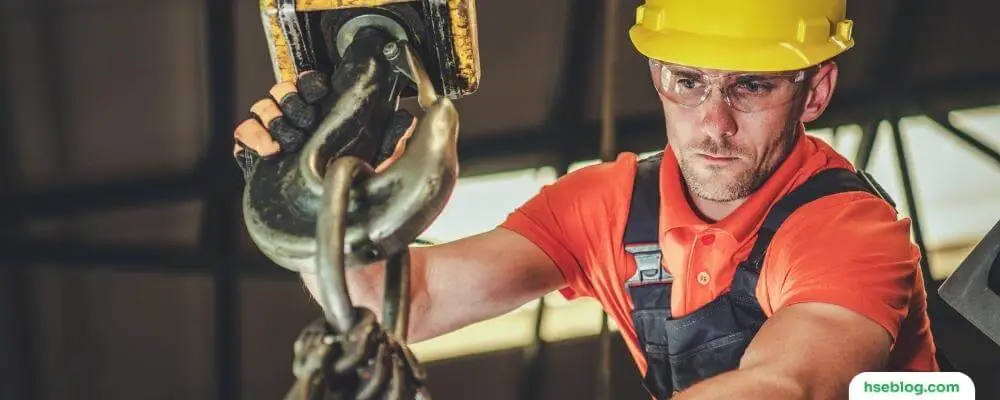
6. Never Stand Under The Load
Never standing under the load is a fundamental rule in lifting equipment safety that must always be followed. Maintaining a safe distance from the load being moved is essential to avoid being hit by the load or the lifting equipment if something goes wrong.
Standing under the load is a common mistake workers make when operating lifting equipment and can lead to serious injuries or fatalities. For instance, if the load is not secured correctly or overloaded, it can shift or fall, hitting anyone underneath it.
Workers should always remain safe during lifting operations, preferably at a distance where they can observe the load’s movement and intervene if necessary. They should also be trained to identify any signs of an unstable load, such as swaying or shifting, and take appropriate action to prevent accidents.
7. Proper Storage
Proper storage of lifting equipment is crucial to ensure that the equipment remains in good condition and is safe to use. When lifting equipment is not in use, it should be stored appropriately in designated storage areas that are clean, dry, and secure.
To store lifting equipment correctly, the following guidelines should be followed:
- Clean the equipment: Before storing the lifting equipment, it should be thoroughly cleaned to remove any dirt, debris, or contaminants. Cleaning the equipment helps to prevent corrosion and damage to critical components, ensuring that the equipment remains in good working condition.
- Inspect the equipment: After cleaning it, it should be inspected for any signs of wear and tear or damage. Any issues found should be addressed promptly to prevent them from becoming hazardous during use.
- Store the equipment in a designated area: Lifting equipment should be stored in designated storage areas that are clean, dry, and secure. The storage area should be free from hazards like chemicals, sharp objects, or extreme temperatures.
- Protect the equipment: Lifting equipment should be protected from the elements, such as rain, snow, or direct sunlight, which can cause damage or corrosion to the equipment’s critical components.
- Use appropriate storage equipment: Lifting equipment should be stored using appropriate storage equipment, such as racks or cradles, to prevent damage and ensure the equipment remains in good working condition.
Proper storage of lifting equipment reduces the risk of accidents and ensures that the equipment remains in good working condition. Regular inspection and maintenance should also be conducted to ensure that the equipment is safe to use when needed.
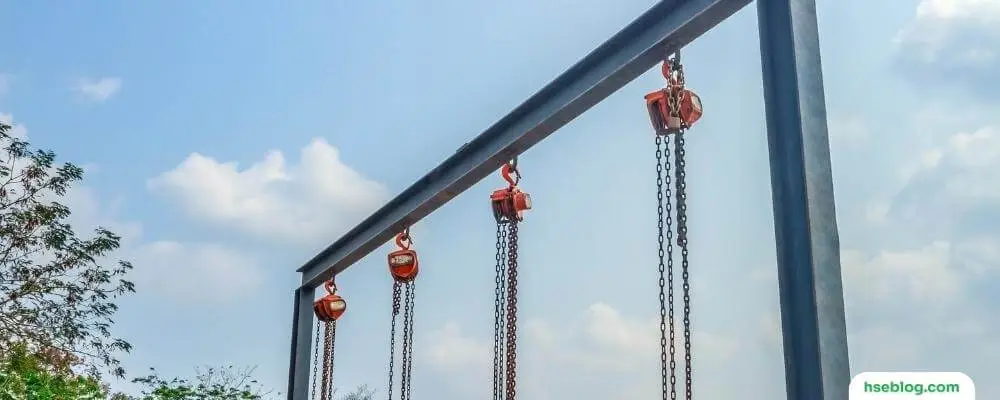
8. Emergency Procedures
Emergency procedures are critical in lifting equipment safety to ensure workers respond promptly and effectively in emergencies. Workers should be trained in emergency procedures to help them remain calm, react appropriately, and minimize risks to themselves and others.
Emergency procedures may include the following:
- Stopping the equipment: Workers should be trained to stop the lifting equipment quickly and safely in emergencies. They should know how to shut down the equipment’s power source or release the load in a controlled manner to prevent accidents.
- Evacuating the area: Workers should know how to evacuate quickly and safely in emergencies. They should know the designated evacuation routes and assembly points and how to assist others in evacuating the area.
- Administering first aid: Workers should be trained in first aid procedures, such as CPR, choking rescue, and treating wounds, to help injured workers until medical professionals arrive.
- Reporting emergencies: Workers should be trained to report emergencies promptly to the appropriate personnel, such as supervisors or emergency services.
Workers should also be familiar with the emergency equipment and procedures for their lifting equipment. For instance, workers operating cranes should know how to use emergency stop buttons, emergency lowering procedures, and the crane’s rescue plan in emergencies.
9. Use Personal Protective Equipment (PPE)
Using personal protective equipment (PPE) is crucial in lifting equipment safety to protect workers from potential hazards associated with lifting operations. The type of PPE required depends on the specific lifting equipment, the work performed, and the potential hazards involved.
The following are examples of PPE that may be required during lifting operations:
- Hard hats protect the head from falling objects, such as tools or debris.
- Safety glasses or goggles: Safety glasses or goggles protect the eyes from flying debris or other hazards.
- Gloves: When handling materials or equipment, gloves protect the hands from cuts, abrasions, and other injuries.
- Safety footwear: Safety footwear protects the feet from falling objects and other hazards.
- High visibility clothing: High visibility clothing makes workers more visible, especially in low-light conditions, reducing the risk of accidents.
- Respirators: Respirators protect workers from inhaling dust, fumes, or other hazardous substances.
- Hearing protection: Hearing protection, such as earplugs or earmuffs, protects workers from noise-induced hearing loss.
Workers should receive appropriate training on using PPE and properly wearing and maintaining it. PPE should also be regularly inspected for any signs of wear or damage and replaced when necessary.
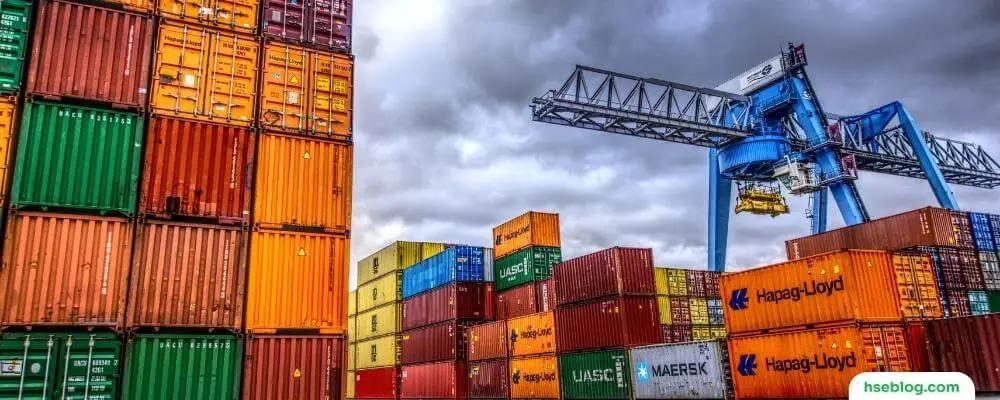
10. Don’t Adjust The Load Manually
Manually adjusting the load when using lifting equipment is not recommended. Instead, operators should use the lifting equipment’s controls to move and reposition the load safely and accurately. Lifting equipment is designed to perform these tasks safely and efficiently, and manual load adjustment can cause accidents, injuries, or equipment damage.
Operators should be trained to operate the lifting equipment correctly and use the appropriate controls to safely move and reposition the load. They should also be aware of the weight and capacity limits of the equipment and ensure that they do not exceed them, which can lead to equipment failure or accidents.
In addition, before moving the load, operators should ensure that it is correctly secured and balanced to prevent the load from shifting or falling during the lifting operation. Operators should also be aware of potential hazards in the surrounding area and take appropriate precautions to avoid accidents or injuries.
Conclusion
Lifting equipment safety is paramount in various industries, including construction, manufacturing, and logistics, where equipment such as cranes, hoists, and forklifts are used. To prevent workplace accidents, injuries, and fatalities, it is essential to follow ten safety rules for lifting equipment safely.
These safety rules include regular inspection and maintenance of lifting equipment, using the appropriate attachments specified by the manufacturer, never standing under the load, properly storing equipment when not in use, using personal protective equipment, and not manually adjusting the load.
Also, proper lifting techniques, training in emergency procedures, and following load capacity limits are crucial to ensure safety when using lifting equipment. Operators should be adequately trained and competent to operate the equipment safely and efficiently.
By following these safety rules, organizations can significantly reduce the risk of accidents related to lifting equipment, protect workers and bystanders, minimize downtime, reduce operational costs, and maintain overall productivity.

